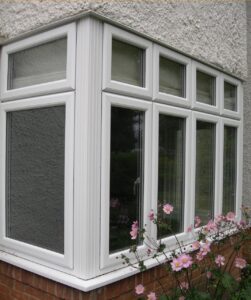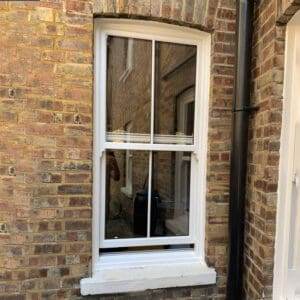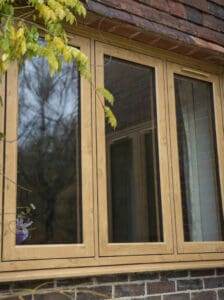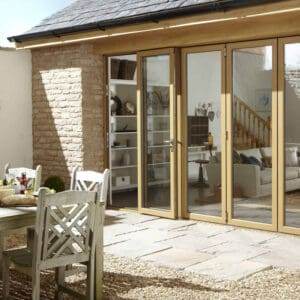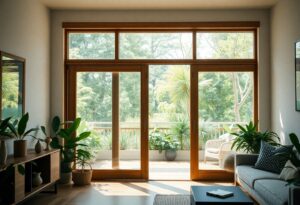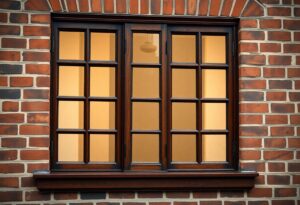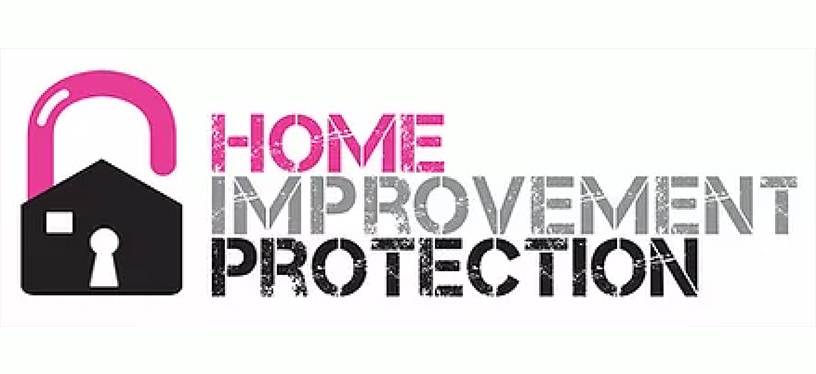Resistance to wind load and impact is crucial for the longevity and safety of your building, particularly when it comes to steel-framed windows. Understanding the structural strength of these windows will help you ensure that they can withstand severe weather conditions and protect your property from potential damage. By learning about the effects of wind force on buildings, you can make informed decisions about your window installations. Discover more about the Effects of Wind Force on Buildings: Steel Building Wind Load to enhance your understanding of these vital components.
Understanding Wind Load
While examining the design and durability of steel-framed windows, it is necessary to recognise the role of wind load. These loads can significantly impact structural integrity, making it important to comprehend their effects to ensure safety and longevity. For further insights, consider exploring THE BENEFITS OF STEEL WINDOWS AND DOORS, which provides relevant information on the subject.
Definitions and Key Concepts
Definitions are fundamental to understanding wind loads. A wind load is the pressure exerted by wind against a surface. This force can vary depending on factors such as location, building height, and exposure to elements.
Factors Influencing Wind Load
To grasp the impact of wind load on your windows, it’s important to consider several factors:
- Geographical location
- Building height
- Surrounding terrain
- Wind speed
- Window design
Assume that these elements can drastically alter the performance of your steel-framed windows under wind pressure.
But understanding these factors goes deeper. You might also consider:
- Local building codes
- Material quality
- Installation methods
- Maintenance practices
Assume that neglecting any aspect can lead to increased risk during severe weather, impacting the overall safety and functionality of your windows.
Structural Strength of Steel-Framed Windows
You should recognise that the structural strength of steel-framed windows is of paramount importance. These windows are designed to withstand various environmental forces while ensuring aesthetic appeal. Their durability provides not only safety but also longevity, making them a wise investment in both residential and commercial buildings.
Material Properties of Steel
Along with being exceptionally strong, steel exhibits remarkable flexibility, allowing it to absorb energy during impact. This characteristic is vital for windows that are exposed to high winds or potential projectiles. The corrosion resistance of modern steel treatments further enhances its suitability for various weather conditions, ensuring a lasting performance for your structures.
Design Considerations for Resilience
After understanding the material properties, you must consider the design of steel-framed windows to enhance their resilience against extreme conditions. The incorporation of features such as reinforced glass, proper sealing, and appropriate anchor points can significantly improve the overall performance of the windows, ensuring they remain intact during adverse weather events.
Resilience in design not only involves the physical attributes of the steel but also strategic planning for expected challenges. By ensuring that you design for worst-case scenarios, such as high wind speeds and potential impacts, you can create a structure that protects against damage and enhances safety. Incorporating redundant features and utilising advanced engineering techniques will further bolster the strength and longevity of your steel-framed windows, ultimately serving as a reliable barrier against the elements.

Impact Resistance Standards
There’s a growing emphasis on impact resistance in modern architecture, especially with the increasing frequency of extreme weather events. Standards are established to ensure that your steel-framed windows not only withstand daily wear and tear but also offer protection against unpredictable forces. By exploring Understanding the Durability of Steel Windows in Architecture, you can gain vital insights into how these windows meet demanding impact resistance criteria.
Industry Regulations and Codes
Standards set forth by various industry regulations dictate the required performance levels of impact-resistant windows. These codes ensure that your windows are built to endure extreme conditions while providing safety and security for occupants. It is imperative to adhere to these guidelines to maintain compliance and guarantee optimal performance.
Testing Methods and Procedures
Industry testing methods are designed to evaluate the impact resistance of windows under controlled conditions. Assessing your windows involves simulating potential forces they may encounter during severe weather or impact events, ensuring they meet stringent safety measures.
Further analysis of testing methods reveals that your windows undergo rigorous examinations, including the important missile impact tests and water penetration tests. These evaluations help ascertain how well your windows can bear impacts from debris, which is vital for safety in vulnerable areas. After the described procedures, it is determined if your windows meet the established building codes and impact resistance ratings. By investing in impact-resistant windows, you are enhancing not only the durability of your structure but also the safety of its occupants during extreme events.
Analyzing the Effects of Wind Load
Now, it is crucial to understand how wind load impacts the performance of steel-framed windows. Wind pressure can exert significant force on the structure, leading to potential deformation or structural failure if not adequately designed to withstand such stresses. By analysing various factors including wind speed, direction, and duration, you can determine how these elements affect your windows, ensuring they meet the necessary standards for safety and durability.
Static vs. Dynamic Loads
Any discussion about wind loads must distinguish between static and dynamic loads. Static loads represent the constant pressure that wind exerts, while dynamic loads vary over time, fluctuating with changes in wind speed and turbulence. Understanding this difference is vital for ensuring your steel-framed windows can cope effectively with both types of load, thereby enhancing your structure’s overall resilience.
Case Studies of Wind Events
Wind events provide significant insights into the real-world impact of wind load on structures. By examining specific case studies, you can assess the effectiveness of various design approaches and materials. Here are some notable examples:
- Hurricane Katrina (2005): Wind speeds reached up to 175 mph, leading to extensive window failures in affected buildings.
- Hurricane Sandy (2012): Storm surges and winds over 80 mph caused a substantial number of window breaches in coastal properties.
- Typhoon Haiyan (2013): Wind gusts exceeding 195 mph highlighted the need for improved impact resistance in window designs.
- Storm Ciara (2020): Recorded wind speeds of 97 mph resulted in property damage across the UK, prompting reviews of wind load calculations in building regulations.
The significance of these case studies lies in their demonstration of how severe wind events impact the safety and durability of your structures. These incidents illustrate that window systems must be designed not just to meet standard requirements, but also to withstand extreme weather conditions. Implementing the lessons learnt from these events can lead to advancements in your design strategies, ultimately enhancing the integrity of your buildings.

Design Strategies for Enhanced Resistance
Keep in mind that the design of steel-framed windows plays a vital role in enhancing resistance against wind loads and impacts. You should consider utilising advanced materials and innovative constructions techniques to ensure maximum structural integrity. By employing strategic design elements, you can significantly improve the performance of your window installations in adverse conditions.
Innovative Design Approaches
Design approaches that leverage cutting-edge technology and engineering principles can greatly enhance the resilience of steel-framed windows. Incorporating aerodynamic shapes and optimising edge treatments can distribute wind loads more effectively, thereby reducing stress concentrations. Additionally, employing modular designs allows for quicker adaptations to local climatic conditions, ensuring your windows are well-equipped to handle specific challenges.
Integration of Safety Features
Above all, integrating safety features into your steel-framed window designs is imperative for mitigating risks associated with extreme weather events. By including impact-resistant glass and enhanced sealing mechanisms, you can provide a robust defence against both wind pressure and potential impacts from debris.
The inclusion of such safety features not only protects your property but also enhances the durability of your windows over time. Impact-resistant glass significantly decreases the likelihood of shattering, while improved sealing mechanisms prevent air and water infiltration, ensuring that your windows withstand harsh conditions effectively. This thoughtful integration of safety measures allows you to maintain both functionality and aesthetic appeal without compromising on performance.
Maintenance and Inspection
To ensure the longevity and safety of your steel-framed windows, regular maintenance and inspection are crucial. By implementing a routine check-up, you can detect any weaknesses that may compromise their structural integrity due to wind load or impact. These practices not only enhance performance but also extend the lifespan of your windows, providing peace of mind and protection for your property.
Importance of Regular Assessments
Importance of regular assessments lies in their ability to identify potential issues before they escalate. Frequent inspections allow you to monitor the condition of your windows, ensuring they are functioning optimally and adhering to safety standards.
Signs of Wear and Potential Failures
Across your steel-framed windows, be vigilant for signs of wear and potential failures that could arise. Common indicators include rust formation, cracks in the frame, or increased air leakage. Addressing these issues promptly can prevent more severe problems, such as compromised structural strength or complete window failure.
Hence, proactively inspecting your windows helps maintain their integrity and safety. Look out for corrosion, peeling paint, or gaps that could signal water ingress. You should also examine seals and hardware components for any signs of fatigue. Prompt maintenance reduces the risk of expensive repairs or replacements and ensures the windows remain resilient against wind forces and impacts, ultimately safeguarding your property.
To wrap up
The structural strength of steel-framed windows in relation to wind load and impact resistance is vital for ensuring safety and durability in your buildings. By understanding the engineering principles and materials involved, you can make informed decisions about the appropriate specifications and installations for your projects. This knowledge not only enhances the longevity of your windows but also contributes to the overall stability and resilience of your structures against environmental forces.
FAQ
Q: What is wind load and why is it important for steel-framed windows?
A: Wind load refers to the force exerted by wind on a surface, which in the context of steel-framed windows, is vital for ensuring that the structure can withstand high winds. Understanding wind load is important as it affects the design and engineering of windows, ensuring that they can maintain their integrity and performance during adverse weather conditions.
Q: How is wind load calculated for steel-framed windows?
A: Wind load is typically calculated using specific formulas that take into account factors such as wind speed, the height and location of the building, and the surface area of the window. Engineers often refer to standards such as the American Society of Civil Engineers (ASCE) 7 or equivalent British standards to determine the appropriate load factors and perform the necessary calculations.
Q: What role does impact resistance play in the performance of steel-framed windows?
A: Impact resistance refers to a window’s ability to withstand forces applied by debris or extreme weather conditions, such as hurricanes or storms. Steel-framed windows are typically designed to endure such impacts, which is vital for protecting the interior of a building and ensuring the safety of its occupants. Evaluating impact resistance helps the design to meet specific building codes and regulations.
Q: What testing methods are used to assess wind load and impact resistance for windows?
A: Various testing methods are employed, including laboratory tests that simulate wind pressure and impact forces. Common tests involve sheer load assessments and the use of projectile impacts to gauge how well the windows can resist these forces. Compliance with standards such as those set by the British Standards Institute (BSI) is vital in validating the performance of the windows.
Q: How can building owners or architects ensure that windows meet the required wind load and impact resistance standards?
A: To ensure that windows meet required standards, it is advisable for building owners or architects to work with experienced engineers and manufacturers who specialise in structural design. Collaborating from the initial design phase through to installation can help to specify and source windows that have been certified for their wind load and impact resistance capabilities, thus ensuring compliance with relevant regulations.

